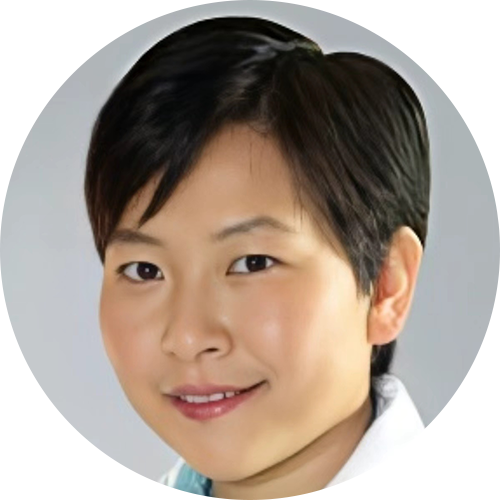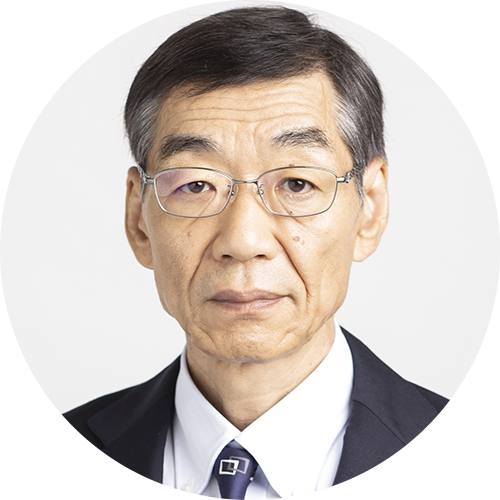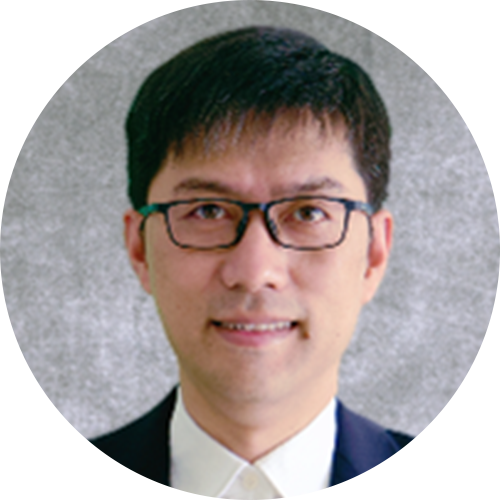

Roland Ryf
Nokia Bell Labs, United States
Title: How digital coherent optical technology is changing optical communication and fiber sensing
Abstract:
Digital signal processing technology in combination with coherent optical technology has dramatically changed the world of fiber-optic communication, providing over one order of magnitude more capacity compared to conventional on-off keying systems. Additionally, it has vastly simplified the line system design, as linear and partially nonlinear impairments can now be compensated in the digital domain, rather then in the physical domain. Small factor pluggable coherent transceivers, that plug directly into routers or Ethernet switches, are further simplifying the overall network architecture, making low-cost high-speed optical links ubiquitous.
A similar revolution has recently started in reflective fiber sensing interrogators, where optical frequency domain reflectometers (OFDRs) enhanced with digital signal processing technologies are outperforming pulsed based state-of-the-art distributed acoustic sensing (DAS) systems, enabling for the first time to obtain DAS equivalent data for the whole length of transatlantic subsea cables instead of only the shore spans, this without impacting communication channels running over the same fiber.
Biography:
Roland Ryf is a Bell Labs fellow and department head at Nokia Bell Labs, Murray Hill, NJ, USA.
He received the B.S. degree in electrical engineering from the Interstate University of Applied Sciences of Technology, Buchs, Switzerland, in 1990 and the M.S. degree in physics and the Ph.D. degree in physics, working on photorefractive self-focusing and spatial solitons, parallel optical processing based on holographic storage, and fast optical correlation, in 1995 and 2000, respectively.
After joining Bell Labs in 2000 he has been working on MEMS based large port-count optical cross-connect switches, high-resolution optical wavelength filters, multimode components and multimode optical amplifiers, and numerous first experimental demonstrations of long-distance high-capacity space-division multiplexed transmission over multimode fibers and coupled-core multicore fibers.
Most recently, he is working on field trials of fiber sensing prototypes based on optical frequency domain refractometers deployed over transatlantic subsea cables.
He is a fellow of the IEEE and a fellow of Optica, recipient of the 2018 William Streifer award, and authored/coauthored over 400 journal and conference publications, and holds over 65 patents.
He is actively involved with the IEEE Photonic Society and Optica, has served as a committee member for various conferences, including the Optical Fiber Conference (OFC), the Conference on Lasers and Electro-Optics (CLEO), and SPIE Photonics West.

Baohua Jia
RMIT University, Australia
Title: Laser nanoprinting of atomaterials and integrated photonic devices
Abstract:
This presentation mainly introduces the interaction between 3D nanoprinting and various materials at the atomic scale. Describe the precise and unparalleled manipulation of materials by nanoprinting at the spatial, temporal, and atomic scales. In particular, the application status and broad prospects of optical nanoprinting and two-dimensional photonic integrated devices are introduced in detail. The report will also share the future development directions of ultrafast optical nanoprinting and angstrom material devices, and the major challenges faced. The developed scalable graphene metamaterials show attractive optical and thermal properties. Through patterning with advanced laser nanoprinting technique, functional photonic devices with ultrathin, light weight and flexible nature have been demonstrated promising exciting opportunities for integrated photonics.
Biography:
Distinguished Professor Baohua Jia is a Fellow of Australian Academy of Technological Sciences and Technologies (FTSE), and Future Fellow at RMIT University, Australia. Before joining RMIT University in 2022, Baohua was a tenured professor at Swinburne University of Technology and Founding Director of Centre for Translational Atomaterials. Professor Jia is a Fellow of Optica (previously known as the Optical Society of America), and a Fellow of the Institute of Materials, Minerals and Mining (IMO3). Since 2019, Prof. Jia has served as a Colleague of Expert for the Australian Research Council. Professor Jia's research focuses on the design and optical characterization of novel nanostructures and nanomaterials, fabrication, and efficient conversion and storage of light energy. As a leading Chief Investigator, Professor Jia received a total of more than $90 million in research funding support. Professor Jia has published more than 350 journal papers with an h-index of 85 (Google Scholar) and developed over 20 invention patents and patent applications. Based on Professor Jia's outstanding contributions in scientific research, she has won many awards, including the 2024 Vice Chancellor Research Award, 2017 finalist of the Australian Prime Minister's Science Award, the Vice Chancellor's Industrial Achievement Award in 2011, 2016, and 2018, 2013, Young Science Leader Award, 2012 UNESCO L'Oréal Australia New Zealand Women in Science Award.

Masatoshi Suzuki
Chitose Institute of Scicence and Technology, Japan
Title: Transformative Technologies in Optical Communication Systems and Future Prospective
Abstract:
Information and communication technology (ICT) is widely spread worldwide, and our life has been drastically changed by ICT, which provides us with various services in our daily lives, business and industries, such as global Internet, SNS, e-mail, telephone, tele-working and so on. Optical communication systems that underpin and enable our worldwide communications infrastructure.
In this presentation, the transformative technologies that enabled significant capacity growth of optical communication systems in past five decades, such as Er-doped optical amplifiers (EDFAs), wavelength division multiplexing (WDM), dispersion managed soliton, and digital coherent transmission, are reviewed. Future technologies leading to further capacity increase both in access and core networks toward beyond 5G/ 6G era are also addressed.
Biography:
Professor Masatoshi Suzuki received B.E., M.E. and Ph.D. degrees from Hokkaido University, Japan, in 1979, 1981 and 1984, respectively. He was the R&D Fellow of KDDI Corp, the Executive Vice President of KDDI R&D Laboratories, President of KDDI foundation and visiting Professor of Waseda University. Currently, he is a Vice President and Professor of Chitose Institute of Science and Technology, Hokkaido, Japan.
Since joining KDD (currently KDDI), Tokyo, Japan in 1984, he has been engaged in research on large-capacity long-haul optical communication systems, including the pioneering research on the world-first EA modulator integrated DFB lasers (EMLs) in 1987, the invention of dispersion managed soliton in 1995, 1Tbit/s transoceanic transmission in 1999, and 10Pbit/s SDM transmission in 2017, which is equivalent of capacity increase of seven order of magnitudes within 30 years. With the technology, he and international teams demonstrated the first 10Gbit/s WDM transmission over 10,000km in 1998, which were applied to most of the trans-Pacific, trans-Atlantic and East-Asian optical submarine cable systems, such as Japan-US, TAT-14, EAC and C2C cables. His current research interests are ultra-large capacity optical communication systems based on space division multiplexing, free-space optical communications for non-terrestrial applications and Silicon Photonics for optical computing.
He is a life Fellow of IEEE, a fellow Emeritus of Optica, and a Fellow and Honorary member of IEICE. He served as an Associate Editor of the Journal of Lightwave Technologies, an elected member of Bord of Governors of IEEE Photonics Society and Auditor of IECIE. He is currently a chairman of Photonic Internet Forum.
Through these works, he has co-authored 5 books and more than 420 peer-reviewed journal and conference papers and produced 120 registered International Patents. He has received various awards for his research over the years, including the Best Paper Awards from OEC 1988, IEICE 1996 and OECC 2000, Achievement Award, Distinguished Achievement and Contributions Award and three IEICE Milestone Awards from IEICE. Minister Awards from MEXT and METI in Japan, Kenjiro Sakurai Memorial Prize, Hisoka Maejima Award, Medal with purple ribbon from Emperor in Japan in 2017, Ichimura Prize in industry in 2018, Telecom System Technical Award in 2021, and C&C Prize in 2024. He is the IEEE/Optica 2025 John Tyndall Award recipient, for pioneering and seminal contributions to large capacity long-haul optical communication systems including integrated light sources, dispersion-managed soliton, WDM submarine cable systems, and spatial multiplexing.

Hao Wang
Huawei Technologies Co., Ltd., China
Title: Evolution of All-Optical Networks for the AI Era
Abstract:
The rapid rise of artificial intelligence (AI) is driving transformative demands on optical networks for lower latency, lower power consumption, higher bandwidth, higher reliability, and greater security. This talk explores the evolution of all-optical networks across Home, Access, Transport, Data-center, and Satellite domains in the AI era. Key enabling technologies—including coherent PON, optical-wireless integration, optical circuit switching (OCS), co-packaged optics (CPO), hollow-core fiber (HCF), satellite laser links, and quantum key distribution (QKD)—will be discussed as pathways toward intelligent, energy-efficient, and globally connected optical infrastructures.
Biography:
Hao Wang is Vice President of the Optical Business Product Line. He is responsible for Huawei's optical technology from end to end, including research and innovation, technology development,He takes charge of the transformation and evolution direction of the optical technology, builds the leading competitiveness, and take responsibility for the commercial success of the optical industry.
Since joining Huawei in the year 2001, Mr. Wang has taken on various roles in the company, including software manager, project team R&D representative, director of the product department, director of B&P Laboratory. Mr. Wang has also established Huawei's Zurich Research Center and built Huawei's European Computing Architecture Research Team from 2018 to 2022.
Mr. Wang is also the Deputy Chairman of Photonic-Electronic Integration Committee, Chinese Society for Optical Engineering.